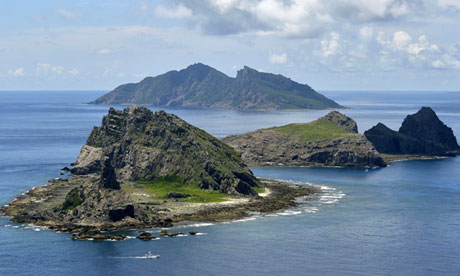In a show of force, China staged a naval exercise in the East China Sea last Friday involving 11 vessels from its naval fleet and civilian maritime agencies. According to the Chinese state media, the exercise was to “simulate a situation where foreign law enforcement vessels obstruct and interfere with our maritime surveillance and fisheries administration agencies.”
Between October 1 and October 10, China sent maritime surveillance vessels into waters near the Senkaku/Diaoyu islands, raising the danger of clashes with the Japanese coast guard which patrols the area. China insists that the islands were “stolen” by Japan at the conclusion of the Sino-Japanese war in 1895.
While the US and Western media highlighted the Chinese maritime drills, Japan held a major naval exercise on Sunday to mark the sixtieth anniversary of the founding of the country’s post-war navy. The operation involved some 40 vessels, including hi-tech destroyers, new conventional submarines and hovercraft designed for amphibious landings. Warships from the US, Australia and Singapore also took part.
Japan and the US have called off a provocative joint exercise scheduled for next month that was to practice the “recapture” of a remote island in ... http://www.globalresearch.ca/confrontation-between-japan-and-china-naval-deployments-in-east-china-sea/5309442
Between October 1 and October 10, China sent maritime surveillance vessels into waters near the Senkaku/Diaoyu islands, raising the danger of clashes with the Japanese coast guard which patrols the area. China insists that the islands were “stolen” by Japan at the conclusion of the Sino-Japanese war in 1895.
While the US and Western media highlighted the Chinese maritime drills, Japan held a major naval exercise on Sunday to mark the sixtieth anniversary of the founding of the country’s post-war navy. The operation involved some 40 vessels, including hi-tech destroyers, new conventional submarines and hovercraft designed for amphibious landings. Warships from the US, Australia and Singapore also took part.
Japan and the US have called off a provocative joint exercise scheduled for next month that was to practice the “recapture” of a remote island in ... http://www.globalresearch.ca/confrontation-between-japan-and-china-naval-deployments-in-east-china-sea/5309442



